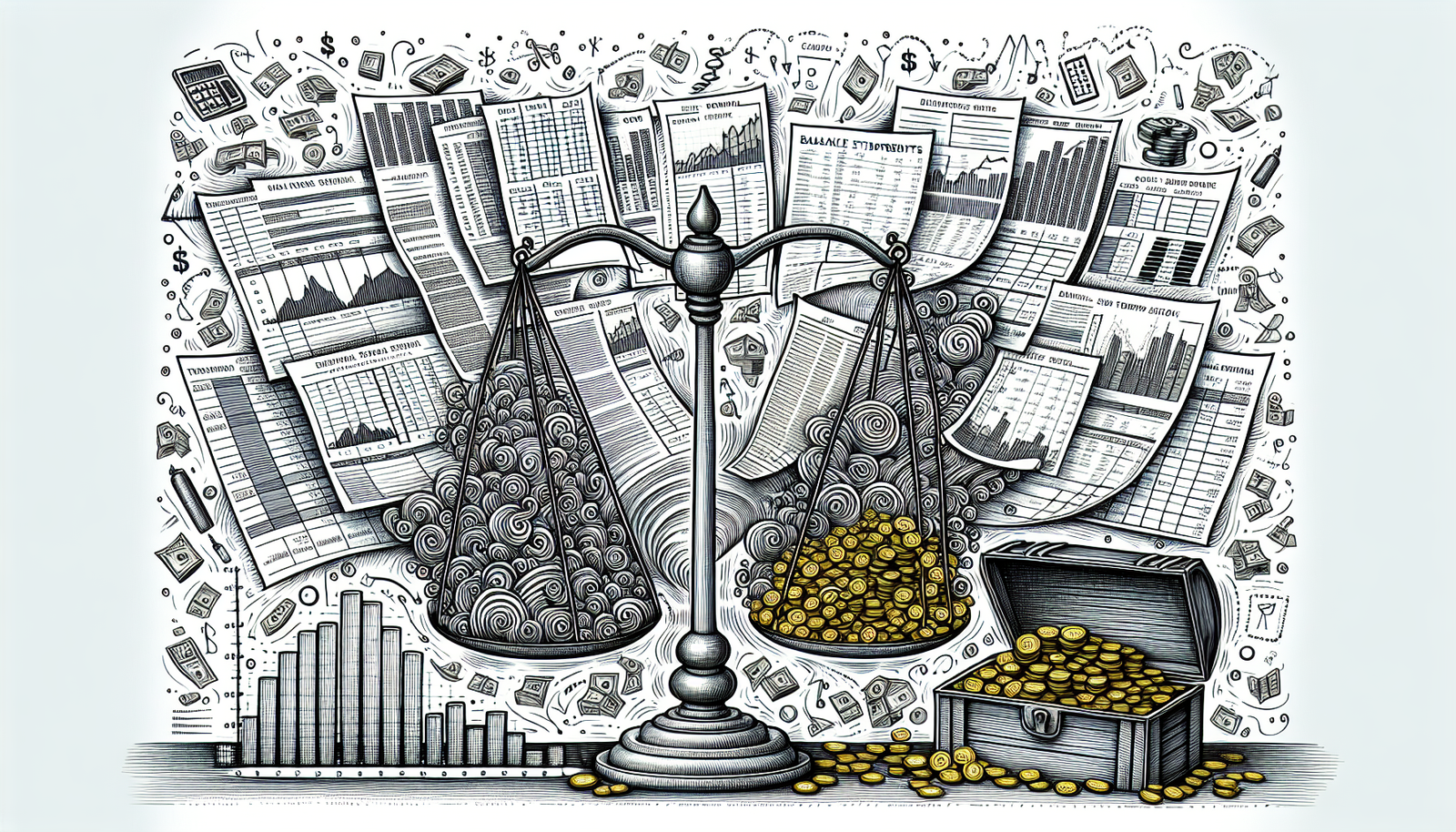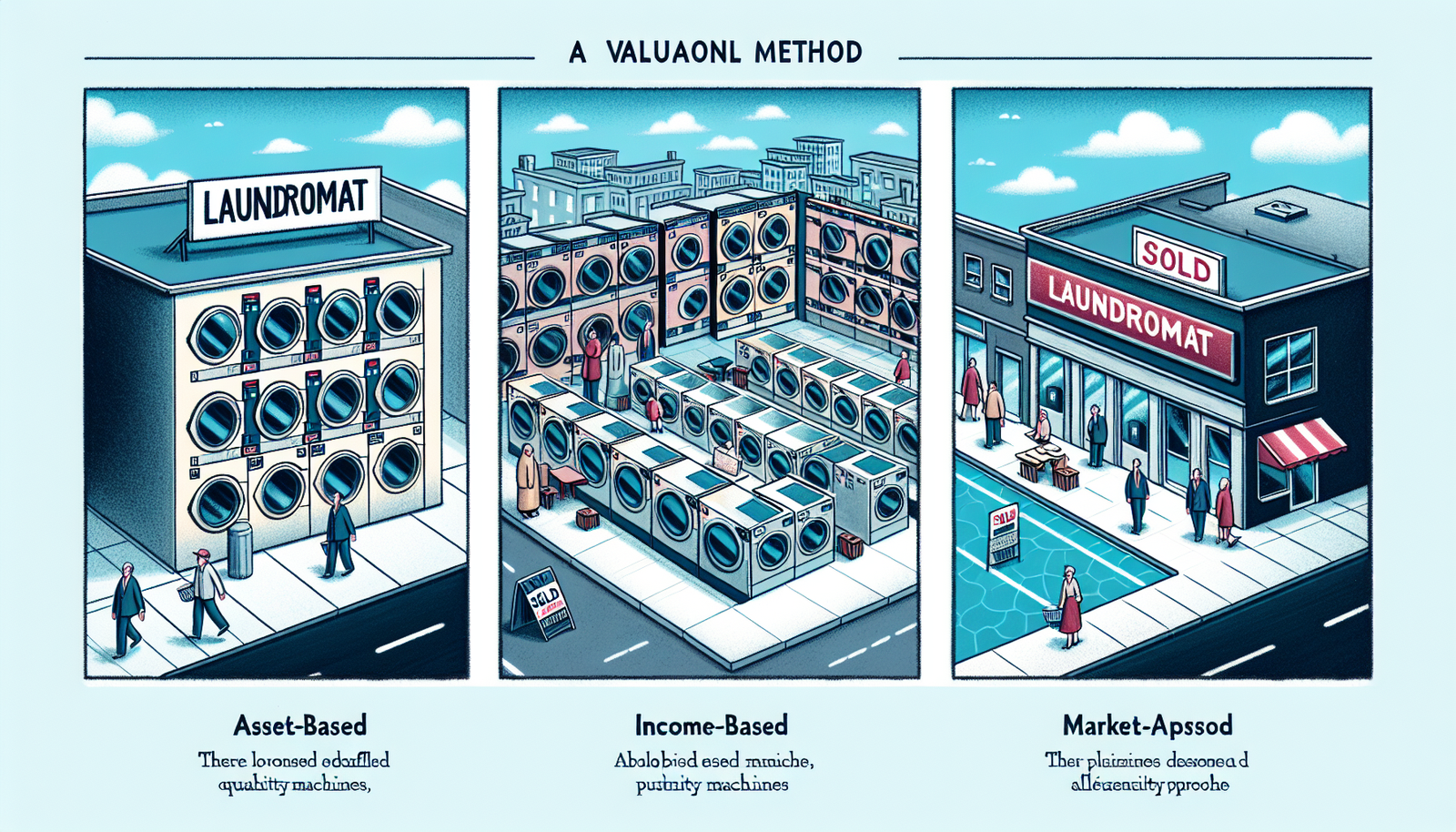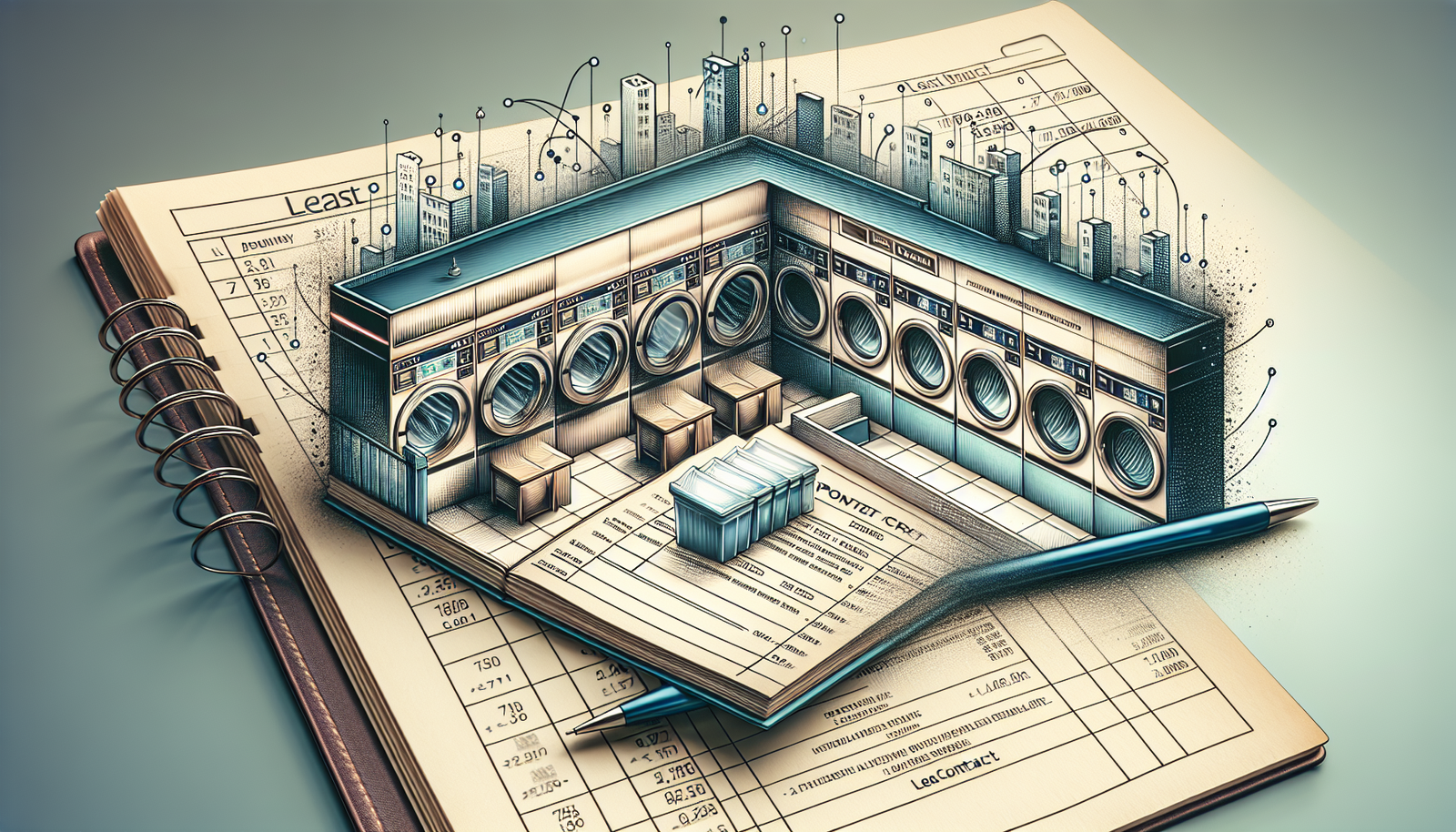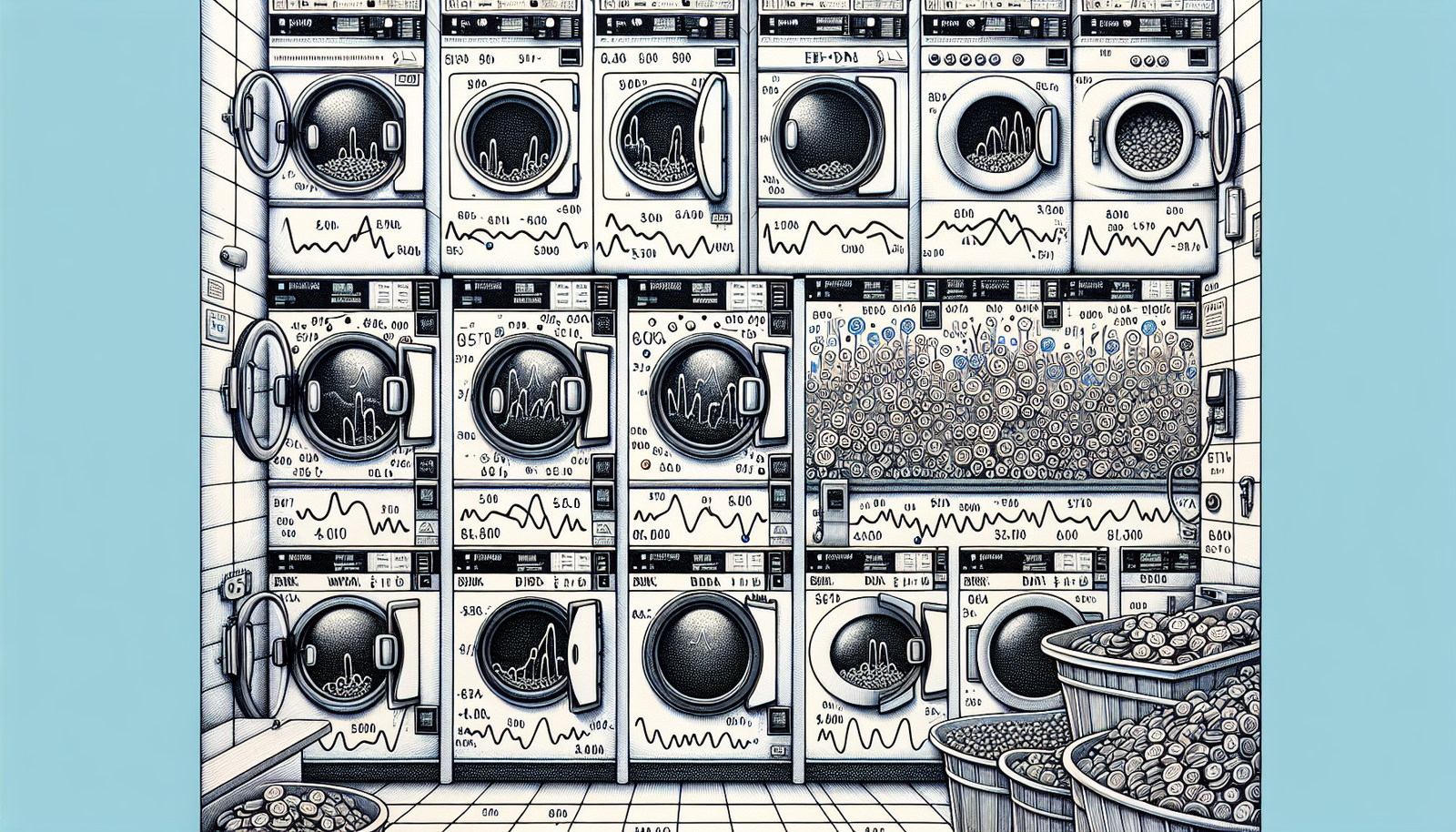Deciphering the value of a laundromat comes down to a blend of analyzing financial performance, estimating the worth of physical assets, and understanding market dynamics.
Ready to dive in? This guide demystifies how to value a laundromat by outlining the key methods and metrics that paint the full picture of a laundry business’s market value.
Walk away with the know-how to navigate laundromat valuation confidently, whether for purchase, sale, or investment opportunities.
Key Takeaways
Proper laundromat valuation requires integrated financial knowledge and awareness of operational dynamics, with the process involving an assessment of both tangible and intangible assets, accurate financial documentation, and the selection of a suitable valuation method.
Valuation methods vary with options like asset-based, income-based, and market-based approaches, each providing a different perspective on the worth of a laundromat, influenced by factors such as location, demographics, equipment condition, and lease terms.
Preparation and presentation are key when valuing a laundromat; maintaining up-to-date financial records, improving curb appeal, and potentially increasing value through operational optimizations and equipment upgrades can significantly affect the final appraisal.
Understanding Laundromat Valuation Basics

Starting the process of laundromat valuation demands a clear understanding of your business—an amalgamation of financial acumen and industry insights.
Laundromat valuation is not just about the numbers; it’s about understanding how these numbers come to life in the day-to-day operations of your laundry facility.
This process assigns value to your laundromat by considering various factors, ranging from the age of your washing machines to the cash flow of your business.
In this endeavor, it’s necessary to:
Assemble financial documents
Closely examine your operations
Select a valuation method that best represents the unique characteristics of your laundromat within its community
Business valuation is the cornerstone of fair transactions, fueling informed decisions and maintaining the integrity of the market.
Be it selling, seeking investment, or merely understanding your laundromat’s worth, a precise valuation serves as your road map in the laundromat industry.
Defining Business Value in the Laundry Industry
In the tapestry of the laundromat business, the threads of value are woven from both the visible and the invisible.
Tangible assets like gleaming laundry equipment, real estate, and stocked inventory form the physical foundation on which your laundromat stands firmly.
But what of the unseen? Intangible assets such as brand recognition, a loyal customer base, and proprietary systems embroider additional worth onto your business value, setting you apart in the bustling market.
Together, these assets, both seen and unseen, are the warp and weft that create the complete picture of business value in the laundromat industry, valued based on more than just the sum of its parts.
Importance of Accurate Laundromat Valuation
Precise laundromat valuation acts as a guiding light, ensuring fairness for all parties involved. Such accuracy instills confidence in both buyers and sellers by grounding the transaction in reality, not speculation.
With an accurate laundromat valuation, you’re not just throwing numbers into the wind; you’re making informed, strategic decisions that can either buoy or sink your next laundromat investment.
Moreover, the ripple effect of an accurate valuation ensures the laundromat industry maintains its integrity, with each business appraiser and laundromat owner accurately valuing and upholding the standards that define the market.
Key Valuation Methods for Your Laundry Business

Laundromat valuation presents us with a choice: which valuation method should we adopt? The asset based valuation, the income based valuation, or the market based valuation—each one offers a different lens through which to view your laundromat’s worth.
There are three main approaches to valuing a laundromat:
The asset-based approach, which tallies up the tangible assets of the business.
The income-based method, which forecasts the potential cash flow into the future.
The market-based approach, which compares your laundromat to similar businesses in the market.
The key is to select the valuation method that best captures the unique facets of your laundry business, ensuring that the value of your laundromat is not just a number, but a reflection of its true market standing.
Asset-Based Approach: Calculating Net Asset Value
The asset-based approach is akin to an archaeologist uncovering relics; it digs into the tangible assets of your laundromat—equipment, property, and inventory—and tallies them up as if they were treasures from a bygone era.
But the excavation doesn’t end there; to unearth the net asset value, one must also account for the laundromat’s liabilities, subtracting them from the sum of assets like a careful sifter removing dirt to reveal the net asset value that lies beneath.
Income-Based Approach: Projected Income and Cash Flow
In contrast, the income-based approach gazes into the crystal ball of your laundromat’s future, divining its worth from projected income and cash flow.
By harnessing the power of the capitalization rate or the discounted cash flow, this method distills the essence of your laundromat’s potential earnings, or gross income minus expenses, into a potent potion of market value.
To ensure the divination is grounded in reality, you’ll need a grimoire of financial documents—profit and loss statements, balance sheets, tax returns—all meticulously prepared and up to date, providing confidence in the valuation outcome.
Market-Based Approach: Comparing Similar Businesses
The market-based approach, however, invites you to the grand ballroom of commerce, where your laundromat is compared to its peers, waltzing alongside businesses that have recently changed hands.
Here, your laundromat’s value is adjusted for size, location, and other distinguishing features, as if tailoring a suit to fit perfectly within the market’s current trends and industry standards.
However, bear in mind that market conditions constantly change and keeping a pulse on these changes is important, as they can significantly impact your laundromat’s value and the ideal timing for your next step.
Assessing Factors That Influence Laundromat Value

Apart from the valuation methods, there are key factors that can impact a laundromat’s value, much like how winds can alter a ship’s course. Some of these factors include:
Location
Demographics
The state of the equipment
The terms of the lease
These elements play into the valuation equation and will determine not just the asking price but the true value of your laundromat. Ensuring that when you hoist the sail for a sale, you do so with confidence and clarity.
Location and Demographics: How They Impact Value
The anchor of any laundromat’s value is its location—a beacon that can either draw in a fleet of customers or leave your business marooned. A laundromat located in a dense urban sprawl, teeming with apartment dwellers or a stone’s throw from a bustling university, can command a higher valuation, buoyed by the steady stream of patrons.
Demographic trends, such as a rising tide of renters or a swelling neighborhood population, can further lift the appeal of your laundromat, enhancing its valuation in the market’s eyes.
Also, remember the significance of a solid lease, akin to a well-anchored ship, which ensures stability and predictability in your operating costs.
Equipment and Maintenance: The Role of Well-Maintained Assets
Now, let’s turn our gaze to the gleaming machines that are the heart of your laundromat—the laundry equipment. The age and condition of these workhorses are of paramount importance, affecting the valuation as surely as the state of sails affects a ship’s speed.
A fleet of well-maintained, modern machines can justify a higher multiple of net operating income, propelling the value of your laundromat to new heights.
Conversely, older machines, prone to breakdowns and costly repairs, can weigh down your valuation, like barnacles on a ship’s hull. Evaluating the replacement cost of your assets is crucial, as it estimates the investment required to modernize your equipment and guarantees a valuation that truly reflects your laundromat’s worth.
Lease Terms and Operating Costs: Their Effect on Valuation
The terms of your lease can be the compass guiding your laundromat’s journey, setting a course for stability and predictability in the tumultuous waters of the market.
A long-term lease, with the right to renew, can add significant value, as it secures a horizon of sustained revenue.
Moreover, a favorable lease where the rent constitutes no more than a quarter of your gross income can elevate your valuation multiple, much like a favorable wind boosts a sailboat’s speed.
Don’t disregard operational costs, where even a mere shift to ENERGY STAR-certified machines can reduce utility bills, guiding your laundromat towards a more profitable and valuable future.
Financial Metrics and Valuation Multiples

Sailing into the realm of financial metrics and valuation multiples is like navigating by the stars; these figures are the celestial bodies that guide you in comparing your laundromat to others in the industry.
Valuation multiples, such as EBITDA and REV, are the sextants that help business appraisers normalize differences, allowing them to chart a course towards an appropriate multiple for assessing return on investment and establishing market value.
Applying these industry benchmarks to your laundromat’s financial performance allows you to accurately estimate its total value, ensuring clarity in determining your laundromat’s worth.
Understanding EBITDA Multiples
EBITDA multiples serve as the sextant in valuing your laundromat, offering a relative measure of how the earning potential compares to the enterprise value.
By applying an industry-specific EBITDA multiple to your laundromat’s earnings before interest, taxes, depreciation, and amortization, you can gain insight into the annual profits that buyers might be willing to pay for your business.
Seller’s Discretionary Earnings (SDE) and Its Significance
Seller’s Discretionary Earnings (SDE) is a beacon that illuminates the laundromat’s true earning potential, offering a glimpse into future earnings beyond the basic financial reports.
Adjusting the reported cash flow for one-time expenses and owner benefits offers a clearer picture of the business value, a critical consideration when setting the selling price.
Preparing Your Laundromat for Valuation

Preparation plays a vital role when gearing up for your laundromat valuation; consider it the dress rehearsal before the main event of the sale. A well-prepared laundromat, with financial records as crisp as freshly laundered sheets, will not only attract potential buyers but also command an asking price that reflects its true worth. From enhancing curb appeal to ensuring your financials are as transparent as the front-loading washer door, every detail counts when preparing to showcase the value of your laundromat.
Ensuring Financial Records Are Up to Date
The backbone of any laundromat valuation is its financial health, which hinges on up-to-date and accurate financial records. Think of these documents as the logbook of your laundromat’s journey, chronicling every financial wave you’ve ridden.
Keeping detailed:
income statements
balance sheets
cash flow statements
tax returns
isn’t just recommended—it’s necessary for due diligence and offers a clear insight into your financial performance.
Using sophisticated accounting software or enlisting the expertise of a professional accountant can ensure that your financial navigation charts are in order, allowing for a valuation that confidently reflects the laundromat’s current standing.
Enhancing Curb Appeal and Facility Condition
Much like a shop’s exterior draws in customers, your laundromat’s curb appeal and condition can considerably shape prospective buyers’ impressions and, consequently, its valuation.
Investing in the aesthetics—sprucing up the exterior, maintaining clear signage, and ensuring the parking area is as welcoming as a calm harbor—can dramatically enhance the appeal of your commercial real estate.
Inside, a regiment of consistent cleaning and maintenance not only provides a pleasant experience for your patrons but also signals to buyers that your laundromat is a well-oiled machine, contributing positively to its overall value.
Strategies for Increasing Your Laundromat’s Value
Guiding your laundromat towards a higher valuation necessitates a forward-thinking approach. Innovative strategies such as introducing additional revenue streams, modernizing operations, and fostering a reputation for exceptional customer service can all elevate your laundromat above the competition. It’s about seeing beyond the wash cycles and dryer buzz, identifying opportunities to diversify offerings and optimize processes that not only enhance your laundromat’s value but also make it a flagship in the local laundry business landscape.
Upgrading Equipment and Technology
Chart a course for the future by upgrading your laundry equipment and embracing the latest technology.
New, high-efficiency machines not only improve operational efficiency but also radiate a commitment to quality, which can captivate potential buyers.
Transitioning to card systems or integrating advanced management software can streamline operations, while investing in equipment that conserves water and energy can lead to significant cost savings—both of which can boost your laundromat’s value and appeal.
Remember, a modern fleet not only improves your laundromat’s image but also its bottom line, making it a treasure trove for the savvy investor.
Optimizing Operations and Reducing Costs
A lean, efficient operation is the hallmark of a valuable laundromat. Conducting an efficiency audit can illuminate areas ripe for improvement, such as reducing utility costs or streamlining staff management. Savvy cost-saving measures, from switching to LED lighting to renegotiating insurance rates, can trim the fat from your operating expenses, bolstering your financial performance and enhancing the perceived business value to prospective buyers.
The Role of Professional Appraisals in Laundromat Valuation
Traversing the intricate realm of laundromat valuation often demands the knowledge of an experienced professional—a business appraiser.
These professionals bring an unbiased perspective, leveraging their deep knowledge of asset based valuation, market conditions, and industry trends to provide an accurate laundromat valuation.
They stand as impartial judges, evaluating every asset, scouring through liabilities, and applying valuation methods with precision to ensure that the valuation process culminates in a fair and accurate representation of your laundromat’s worth.
Summary
As we draw our voyage through the complex seas of laundromat valuation to a close, we reflect on the myriad factors that determine a laundromat’s worth.
From the tangible assets that hum and spin to the intangible goodwill that keeps customers loyal, from the financial metrics that guide us to the professional appraisals that confirm our course—each plays a part in accurately valuing your laundromat.
Embrace these insights and strategies, and you’ll not only know the value of your laundromat but also how to enhance it, ensuring that your laundry business continues to flourish in the market’s ebb and flow.
Frequently Asked Questions
What are the main methods for valuing a laundromat?
The main methods for valuing a laundromat are the asset-based approach, the income-based approach, and the market-based approach, each considering different aspects of the business’s value. Choose the method that best fits your specific laundromat.
How does the condition of equipment affect a laundromat’s value?
The condition and age of laundry equipment greatly impact a laundromat’s value. Well-maintained and modern equipment can increase the valuation, while older machines can lower it due to higher maintenance costs and operational disruptions.
Why is accurate and updated financial record-keeping important in laundromat valuation?
Accurate and updated financial records are important in laundromat valuation because they provide a clear picture of the business’s financial health and performance, which is crucial for potential buyers to assess profitability.
Can upgrading a laundromat’s technology improve its value?
Absolutely, upgrading a laundromat’s technology can enhance efficiency, reduce costs, and improve customer satisfaction, leading to increased valuation.
What role do professional appraisals play in the valuation process?
Professional appraisals play a crucial role in the valuation process by providing an unbiased and accurate assessment of a business’s worth, considering its assets, liabilities, and industry position. This ensures a fair and well-informed valuation.

